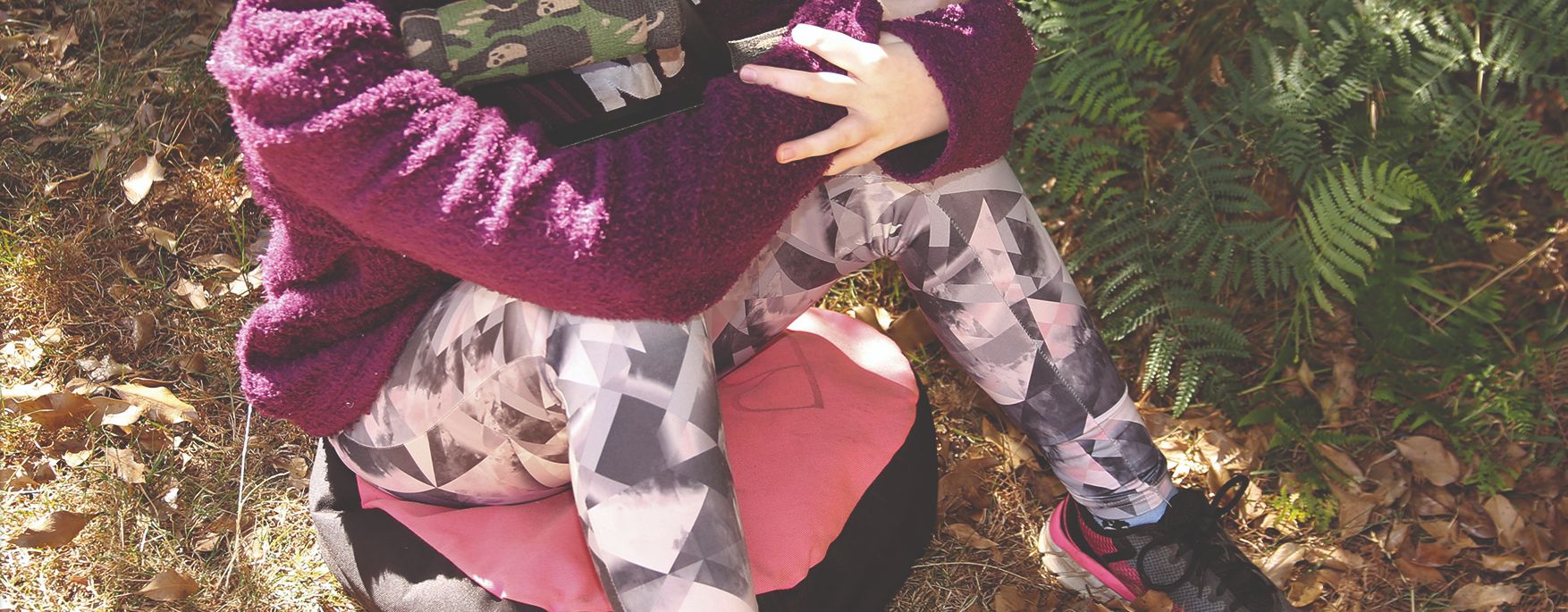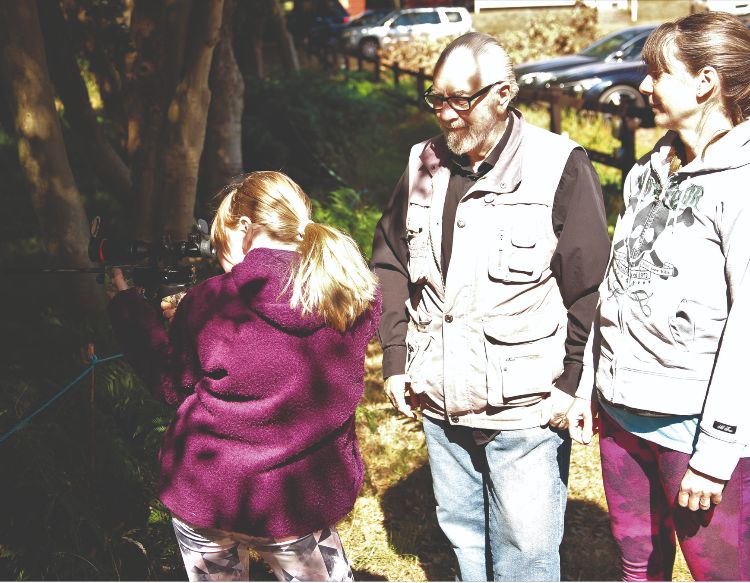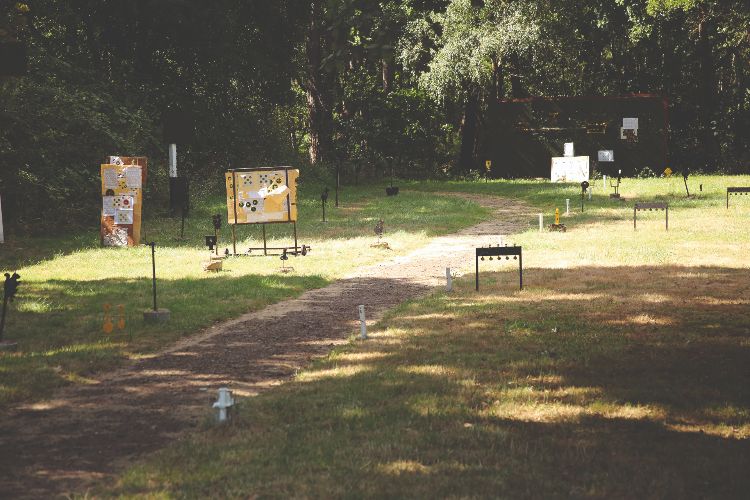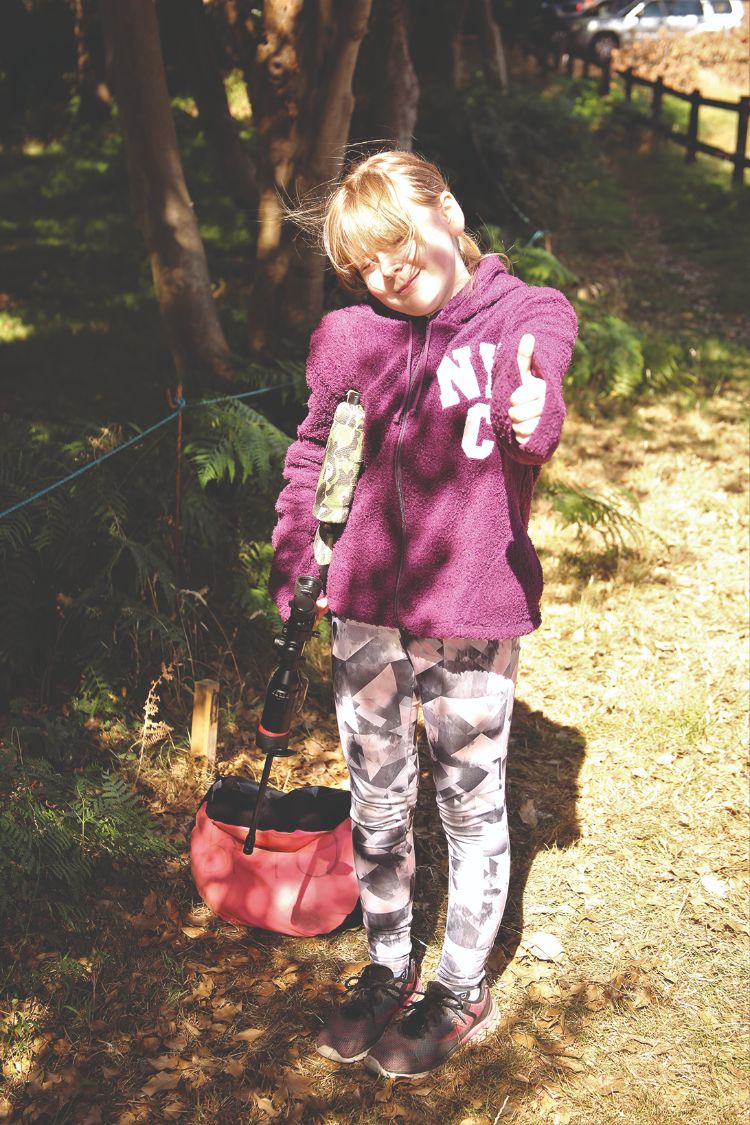Terry reminds us of the importance of proper coaching for our sport’s most important asset
I was at my club, testing the rifle you’ll see elsewhere in this issue, when a young girl and her mum arrived. They turned out to be Viki, the daughter, and Loki, granddaughter, of my clubmate, Alan, and having seen Loki shoot on a previous occasion, I was keen to see how she was progressing. The main range was well populated at the time, as we ‘mature enthusiasts’ held court and played with our various air-powered toys, and I noticed that Alan guided Viki and Loki away from the banter, to a quiet part of a permanent range we have to the side of the main one. That was a wise move, and it prompted the idea for this article. Here are my thoughts and findings on what is undoubtedly one of the most important responsibilities we have – nurturing young shooters.
 Loki learned the sitting position in minutes, and she'll achieve more success because of it. Quite rightly, she's extremely pleased about this, and about the praise she was given
Loki learned the sitting position in minutes, and she'll achieve more success because of it. Quite rightly, she's extremely pleased about this, and about the praise she was given
THE NEXT GENERATION
Without the new generation of airgun shooters, our sport will die at its roots. New shooters can come to us at any age, of course, and it’s our absolute duty to make them feel welcome, but it’s the younger generation that needs our guidance more than any other. Whilst proper coaching can help create a lifetime of interest in our sport, please believe me when I say that it’s just as easy to put off a young shooter forever. We need to get this vital task right, and thankfully, it’s fairly straightforward.
 Mum Nki, and granddad Alan keep young Loki well supervised, ecouraged and properly tutored, within an environment set up for success ... and fun
Mum Nki, and granddad Alan keep young Loki well supervised, ecouraged and properly tutored, within an environment set up for success ... and fun
KIDS ARE NOT SMALL ADULTS
First, please remember that young shooters are not mini-adults. Just as we all were at their age, young shooters have their own mindsets and motivations, and our first obligation when teaching them to shoot, is to make the lessons safe, enjoyable, and rewarding.
Safe conduct must be instilled from the first, of course, but even this should be constructive, rather than a ‘fire and brimstone’ lecture of impending doom. Make sure examples of following your guidance are always praised, every bit as much as reinforcing that guidance when you see the need. ‘Well done for keeping that muzzle down’, or ‘Great to see you checking that the rifle is safe before you put it away’, will create positive reinforcement that stays with the pupil and encourages them to repeat good behaviour.
KEEP THE LESSONS SHORT
In my experience, having young shooters training for hours on end is counter productive. Gruelling shooting sessions quickly become something to be endured, rather than enjoyed, so keep them fairly short. Your pupil’s body language will tell you when they’re tiring, and some will maintain peak enthusiasm for far longer than others, but one to two hours is usually about right.
 An airgun club is the perfect learning environment for young shooters, but back gardens can be really productive, too.
An airgun club is the perfect learning environment for young shooters, but back gardens can be really productive, too.
MIX THINGS UP
Within that shooting session, try to teach at least three core skills, and do so in a way that brings reward for the pupil. Airgun shooting is one of the most ‘instantly rewarding’ sports on the planet, and a target hit, or the foundation of a stance learned, will create immediate positivity, especially if you praise the achievement.
MAKE THE GOALS REALISTIC
Always set up your coaching sessions to create success by training on targets that can be hit, and techniques that can be learned fairly quickly. With targets, simply place these at fairly short ranges, and make sure they’re large enough to promote a good success rate. When it comes to teaching technique, break down each of these to their separate stages.
For instance, it’s far better to teach the various elements of, say, trigger technique – hand position and tension/finger placement/the two-stage activation of the trigger/follow-through – as distinct phases that will eventually be combined, rather than an entire sequence in one lesson. Getting each of these stages right, and learning to incorporate them, automatically, as part of the overall technique, is a massive step for any shooter, so give your pupil time to learn and understand each one before moving on.
 This is what good teaching is all about. Loki loves her shooting, and it's up to her eachers to make sure she always does.
This is what good teaching is all about. Loki loves her shooting, and it's up to her eachers to make sure she always does.
DON’T DO THIS
I’d like to implant a few ‘don’ts’. Don’t ‘drive’ your pupil by pushing them on when they’ve clearly had enough, or when they’re not succeeding. Instead, take a break, change the direction of the lesson, or revert to something your pupil is good at.
Don’t show your pupil how easy something is, by doing it yourself. By all means demonstrate the technique you’re trying to teach, but don’t reduce its value by showing how ‘easy’ it is. That promotes an unhealthy mindset in the pupil of ‘I can’t even get THAT right’, and that’s precisely what’s not required.
Don’t EVER adopt the ‘strict teacher teaches the most’ approach that may have worked on you when you were at school. It worked on me, too, but this isn’t formal, compulsory education; it’s something our pupils do for enjoyment and reward, where safety is the only non-negotiable aspect, and even that should be taught in a positive way.